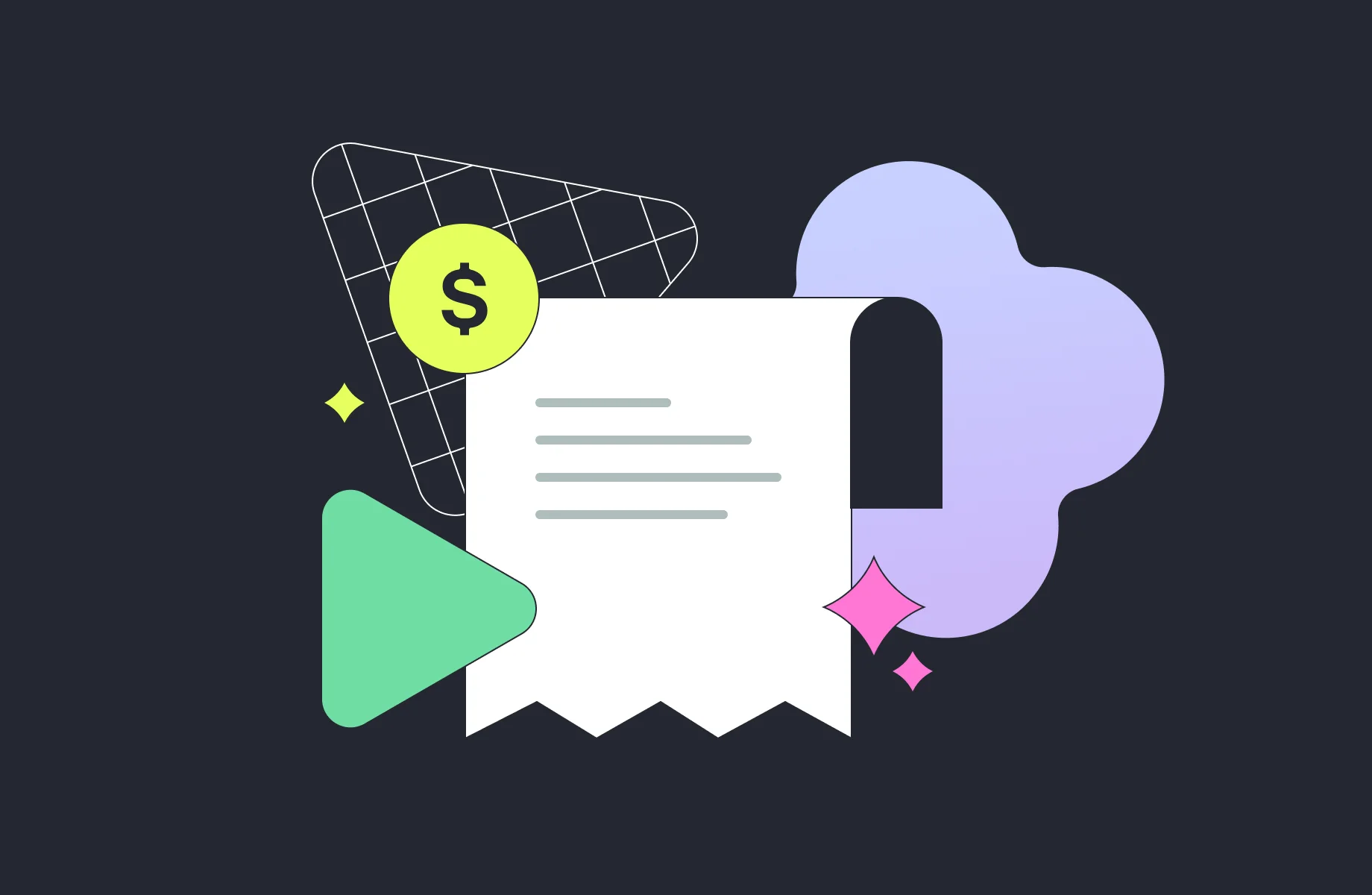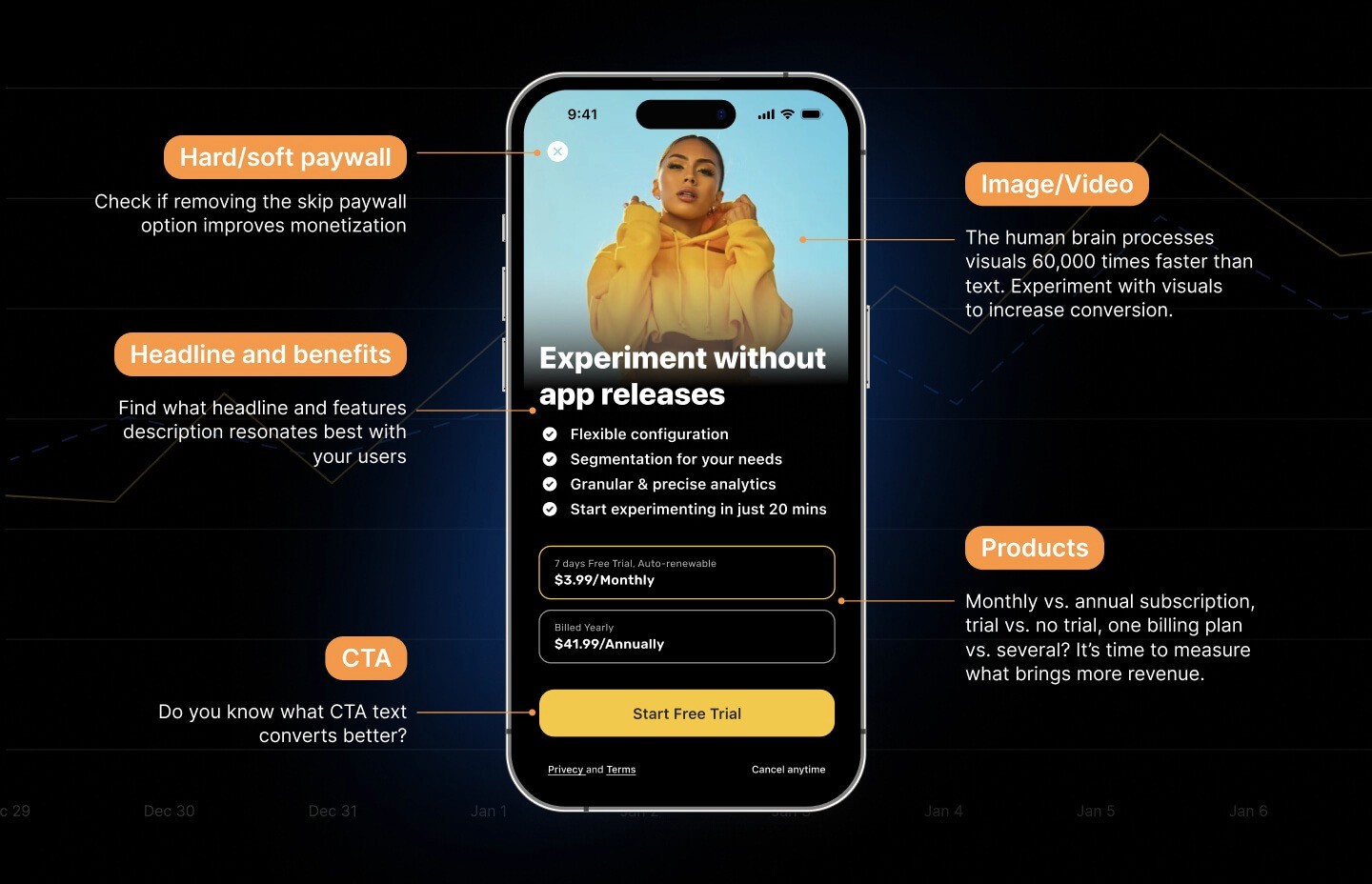Summary
One of the key questions that will come up when developing and growing a subscription-based app is how much to charge for it and how often. You don’t want to scare away too many customers with a high price, but you also don’t want to miss out on potential revenue by setting your price unreasonably low.
Getting started with subscription-based apps can be overwhelming, so how to get the pricing just right? Through a process called A/B testing. And that’s precisely what we are going to discuss. We’ll cover what A/B price testing means in the context of subscription apps, how you can run such tests, and the benefits of the process. Let’s get started.
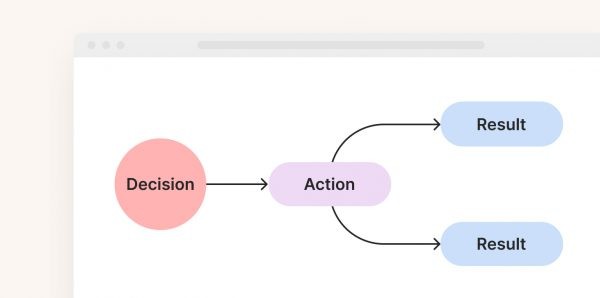
Why It’s Important To Test Prices
What is A/B Testing for Subscription Mobile Apps?
As you know, subscription apps have varying prices. Prices will differ depending on whether you are paying for weekly, monthly, yearly, or lifetime access. Typically, the longer duration the customer pays for — the higher the price is.
For instance, Headspace app initially provides two offers to its users: monthly or annual subscription.

Chances are, the Headspace team arrived at these specific price points and offers after running A/B testing.
So, what is A/B price testing? It is the process of comparing two pricing options and analyzing the results. The test is done by splitting your audience into two segments and seeing how a change in price affects sales, revenue, and LTV.
Does a $2 price increase scare off customers or does it generate more profit in the long term? Does a $1 price decrease generate enough extra conversions and more recurring payments? All these questions can be answered by A/B testing.
A/B price testing allows you to discover which strategy leads to the highest LTV and revenue.
How to A/B Test Your Subscription App Pricing?
Now that you know what A/B price tests are, it’s time to learn how to perform the testing. Here’s a step-by-step of how you’d have to approach the process.
Determine what you want to test
First, you need to decide what exactly you’re testing. What’s your hypothesis? Which two pricing variants do you want to test? What’s the end goal? At the end of the day, your test needs to lead to a greater objective.
It’s highly unlikely that you’ll get anything useful from running an A/B price test “just for fun”. So, don’t rush. Identify what your hypothesis is and what the outcomes of your experiment would mean. Only after doing that can you move on to creating the different offers.
Create the varying offers
Next, you’ve got to determine the two pricing variants you’ll be comparing. Remember that it’s very important not to have many differences in the two offers because that’ll make it harder to identify which one actually influenced the user’s decision.
Hence, determine the two varying prices and segment your audience to get clear on which one will be exposed to version A and which to version B. Make sure each audience size is big enough for you to gather enough data for analysis.
Once that’s settled, it’s time to start the test!
Run the test
If you’ve got the technical side done, this step is pretty straightforward. Simply launch the test for a specific duration of time and begin gathering data. Don’t forget that the look of your A/B offers needs to be identical except for the pricing since that’s the element you want to test.
Analyze results
Finally, after the A/B test is complete — it’s time to identify the winner! Take a look at engagement, conversions, and other metrics you’ve been tracking, they might reveal interesting trends. Also, consider comparing your numbers to in-app subscription benchmarks so that you can measure performance against industry norms.
However, the most important metric to look at is your revenue and LTV. Sure, you may have more conversions on the lower-priced offer, but that doesn’t mean they translate to higher revenue levels. Hence, determine which offer brought in the highest revenue and highest projected LTV. That’s your winner.
Implement changes or do follow-up tests
If you’re happy with the results and want to go ahead and settle on a price — now is the time to do it. Update your offers to the price points that bring in the most revenue and have the highest LTV.
Unfortunately, you may not immediately get the answers you seek. Your test might yield inconclusive results. That doesn’t mean it was a useless test. On the contrary, you’ve likely gathered some valuable data that can serve to adapt your hypothesis for future tests.
In that case, you’ve got to update your hypothesis and do follow-up tests with new price variations. Generally, all these experiments will prove valuable as you’re always gathering insights about your product value and customer behavior. These findings can later even help you with your win-back approaches.

Benefits of Conducting Pricing A/B Tests
Mobile developers and marketers will see a lot of advantages from running pricing A/B tests. However, there are three main benefits that we should cover so that you fully grasp the implications of such an experiment.
Better understanding of product value
By testing how users react to different price points, you’ll get an insight into what your target audience is sensitive to. Do they prefer to pay upfront because they have enough disposable income or are they very price sensitive and would rather pay a bit every month?
Even more importantly, you’ll be able to identify if the set price truly reflects the perceived product value. Perhaps, there are things you can rework and enhance in your product that will make customers more willing to pay. All these insights will come to light as a result of an effective A/B price test.
Increased conversions to paying user
Thanks to successful A/B tests you’ll be able to adapt pricing strategies based on your findings. Thus, setting rates at the most optimal levels for users and your long-term revenue goals. This will lead to an increase in conversions to paying users.
The truth is, pricing has a direct effect on a few conversion metrics — install-to-trial, install-to-paying subscriber, and trial-to-paying subscriber. If your price points are too high, conversions will be lower. Not only because users may intentionally avoid the purchase, but also because they might have payment limits on their cards or simply not enough money in the account.
Hence, by setting the best mobile app subscription price you’ll end up increasing the number of conversions into paying users and boost your business performance.
Revenue growth
Finally, this A/B price testing benefit is rather self-explanatory. By getting higher conversions into paying customers you’ll inevitably see significant revenue growth. Not to mention, since you’ll also be basing your decisions on the LTV metric, the recurring revenue will also increase. Thus, allowing you to invest in growing your mobile app business.
Mobile developers and marketers will see a lot of advantages from running pricing A/B tests. However, there are three main benefits that we should cover so that you fully grasp the implications of such an experiment.

Is It Time To A/B Test Your Pricing?
As you can tell from today’s article, A/B price testing is essential for mobile application developers and marketers. It helps gain a deeper understanding of your product value and customer preferences, ultimately leading to higher conversions and revenue.
Tracking and analyzing data is an important aspect of every subscription business and at Qonversion we always aim to provide you with insights all in one place. You might already be familiar with our mobile subscription analytics tool and the Product Center. However, to further expand our offering, we’ve been highly focused on creating an A/B testing solution.
So, we are excited to let you know that if you don’t want to be left to your own devices with running A/B price tests — you can turn to us. From now on, Qonversion has an A/B testing functionality that you can leverage to boost your business performance.

Don’t hesitate to reach out and find out more! We’re excited to help you grow your mobile app and take on a larger market share.
You also might be interested in:
One of the key questions that will come up when developing and growing a subscription-based app is how much to charge for it and how often. You don’t want to scare away too many customers with a high price, but you also don’t want to miss out on potential revenue by setting your price unreasonably low.
Getting started with subscription-based apps can be overwhelming, so how to get the pricing just right? Through a process called A/B testing. And that’s precisely what we are going to discuss. We’ll cover what A/B price testing means in the context of subscription apps, how you can run such tests, and the benefits of the process. Let’s get started.

Why It’s Important To Test Prices
What is A/B Testing for Subscription Mobile Apps?
As you know, subscription apps have varying prices. Prices will differ depending on whether you are paying for weekly, monthly, yearly, or lifetime access. Typically, the longer duration the customer pays for — the higher the price is.
For instance, Headspace app initially provides two offers to its users: monthly or annual subscription.

Chances are, the Headspace team arrived at these specific price points and offers after running A/B testing.
So, what is A/B price testing? It is the process of comparing two pricing options and analyzing the results. The test is done by splitting your audience into two segments and seeing how a change in price affects sales, revenue, and LTV.
Does a $2 price increase scare off customers or does it generate more profit in the long term? Does a $1 price decrease generate enough extra conversions and more recurring payments? All these questions can be answered by A/B testing.
A/B price testing allows you to discover which strategy leads to the highest LTV and revenue.
How to A/B Test Your Subscription App Pricing?
Now that you know what A/B price tests are, it’s time to learn how to perform the testing. Here’s a step-by-step of how you’d have to approach the process.
Determine what you want to test
First, you need to decide what exactly you’re testing. What’s your hypothesis? Which two pricing variants do you want to test? What’s the end goal? At the end of the day, your test needs to lead to a greater objective.
It’s highly unlikely that you’ll get anything useful from running an A/B price test “just for fun”. So, don’t rush. Identify what your hypothesis is and what the outcomes of your experiment would mean. Only after doing that can you move on to creating the different offers.
Create the varying offers
Next, you’ve got to determine the two pricing variants you’ll be comparing. Remember that it’s very important not to have many differences in the two offers because that’ll make it harder to identify which one actually influenced the user’s decision.
Hence, determine the two varying prices and segment your audience to get clear on which one will be exposed to version A and which to version B. Make sure each audience size is big enough for you to gather enough data for analysis.
Once that’s settled, it’s time to start the test!
Run the test
If you’ve got the technical side done, this step is pretty straightforward. Simply launch the test for a specific duration of time and begin gathering data. Don’t forget that the look of your A/B offers needs to be identical except for the pricing since that’s the element you want to test.
Analyze results
Finally, after the A/B test is complete — it’s time to identify the winner! Take a look at engagement, conversions, and other metrics you’ve been tracking, they might reveal interesting trends. Also, consider comparing your numbers to in-app subscription benchmarks so that you can measure performance against industry norms.
However, the most important metric to look at is your revenue and LTV. Sure, you may have more conversions on the lower-priced offer, but that doesn’t mean they translate to higher revenue levels. Hence, determine which offer brought in the highest revenue and highest projected LTV. That’s your winner.
Implement changes or do follow-up tests
If you’re happy with the results and want to go ahead and settle on a price — now is the time to do it. Update your offers to the price points that bring in the most revenue and have the highest LTV.
Unfortunately, you may not immediately get the answers you seek. Your test might yield inconclusive results. That doesn’t mean it was a useless test. On the contrary, you’ve likely gathered some valuable data that can serve to adapt your hypothesis for future tests.
In that case, you’ve got to update your hypothesis and do follow-up tests with new price variations. Generally, all these experiments will prove valuable as you’re always gathering insights about your product value and customer behavior. These findings can later even help you with your win-back approaches.

Benefits of Conducting Pricing A/B Tests
Mobile developers and marketers will see a lot of advantages from running pricing A/B tests. However, there are three main benefits that we should cover so that you fully grasp the implications of such an experiment.
Better understanding of product value
By testing how users react to different price points, you’ll get an insight into what your target audience is sensitive to. Do they prefer to pay upfront because they have enough disposable income or are they very price sensitive and would rather pay a bit every month?
Even more importantly, you’ll be able to identify if the set price truly reflects the perceived product value. Perhaps, there are things you can rework and enhance in your product that will make customers more willing to pay. All these insights will come to light as a result of an effective A/B price test.
Increased conversions to paying user
Thanks to successful A/B tests you’ll be able to adapt pricing strategies based on your findings. Thus, setting rates at the most optimal levels for users and your long-term revenue goals. This will lead to an increase in conversions to paying users.
The truth is, pricing has a direct effect on a few conversion metrics — install-to-trial, install-to-paying subscriber, and trial-to-paying subscriber. If your price points are too high, conversions will be lower. Not only because users may intentionally avoid the purchase, but also because they might have payment limits on their cards or simply not enough money in the account.
Hence, by setting the best mobile app subscription price you’ll end up increasing the number of conversions into paying users and boost your business performance.
Revenue growth
Finally, this A/B price testing benefit is rather self-explanatory. By getting higher conversions into paying customers you’ll inevitably see significant revenue growth. Not to mention, since you’ll also be basing your decisions on the LTV metric, the recurring revenue will also increase. Thus, allowing you to invest in growing your mobile app business.
Mobile developers and marketers will see a lot of advantages from running pricing A/B tests. However, there are three main benefits that we should cover so that you fully grasp the implications of such an experiment.

Is It Time To A/B Test Your Pricing?
As you can tell from today’s article, A/B price testing is essential for mobile application developers and marketers. It helps gain a deeper understanding of your product value and customer preferences, ultimately leading to higher conversions and revenue.
Tracking and analyzing data is an important aspect of every subscription business and at Qonversion we always aim to provide you with insights all in one place. You might already be familiar with our mobile subscription analytics tool and the Product Center. However, to further expand our offering, we’ve been highly focused on creating an A/B testing solution.
So, we are excited to let you know that if you don’t want to be left to your own devices with running A/B price tests — you can turn to us. From now on, Qonversion has an A/B testing functionality that you can leverage to boost your business performance.

Don’t hesitate to reach out and find out more! We’re excited to help you grow your mobile app and take on a larger market share.
You also might be interested in:
One of the key questions that will come up when developing and growing a subscription-based app is how much to charge for it and how often. You don’t want to scare away too many customers with a high price, but you also don’t want to miss out on potential revenue by setting your price unreasonably low.
Getting started with subscription-based apps can be overwhelming, so how to get the pricing just right? Through a process called A/B testing. And that’s precisely what we are going to discuss. We’ll cover what A/B price testing means in the context of subscription apps, how you can run such tests, and the benefits of the process. Let’s get started.

Why It’s Important To Test Prices
What is A/B Testing for Subscription Mobile Apps?
As you know, subscription apps have varying prices. Prices will differ depending on whether you are paying for weekly, monthly, yearly, or lifetime access. Typically, the longer duration the customer pays for — the higher the price is.
For instance, Headspace app initially provides two offers to its users: monthly or annual subscription.

Chances are, the Headspace team arrived at these specific price points and offers after running A/B testing.
So, what is A/B price testing? It is the process of comparing two pricing options and analyzing the results. The test is done by splitting your audience into two segments and seeing how a change in price affects sales, revenue, and LTV.
Does a $2 price increase scare off customers or does it generate more profit in the long term? Does a $1 price decrease generate enough extra conversions and more recurring payments? All these questions can be answered by A/B testing.
A/B price testing allows you to discover which strategy leads to the highest LTV and revenue.
How to A/B Test Your Subscription App Pricing?
Now that you know what A/B price tests are, it’s time to learn how to perform the testing. Here’s a step-by-step of how you’d have to approach the process.
Determine what you want to test
First, you need to decide what exactly you’re testing. What’s your hypothesis? Which two pricing variants do you want to test? What’s the end goal? At the end of the day, your test needs to lead to a greater objective.
It’s highly unlikely that you’ll get anything useful from running an A/B price test “just for fun”. So, don’t rush. Identify what your hypothesis is and what the outcomes of your experiment would mean. Only after doing that can you move on to creating the different offers.
Create the varying offers
Next, you’ve got to determine the two pricing variants you’ll be comparing. Remember that it’s very important not to have many differences in the two offers because that’ll make it harder to identify which one actually influenced the user’s decision.
Hence, determine the two varying prices and segment your audience to get clear on which one will be exposed to version A and which to version B. Make sure each audience size is big enough for you to gather enough data for analysis.
Once that’s settled, it’s time to start the test!
Run the test
If you’ve got the technical side done, this step is pretty straightforward. Simply launch the test for a specific duration of time and begin gathering data. Don’t forget that the look of your A/B offers needs to be identical except for the pricing since that’s the element you want to test.
Analyze results
Finally, after the A/B test is complete — it’s time to identify the winner! Take a look at engagement, conversions, and other metrics you’ve been tracking, they might reveal interesting trends. Also, consider comparing your numbers to in-app subscription benchmarks so that you can measure performance against industry norms.
However, the most important metric to look at is your revenue and LTV. Sure, you may have more conversions on the lower-priced offer, but that doesn’t mean they translate to higher revenue levels. Hence, determine which offer brought in the highest revenue and highest projected LTV. That’s your winner.
Implement changes or do follow-up tests
If you’re happy with the results and want to go ahead and settle on a price — now is the time to do it. Update your offers to the price points that bring in the most revenue and have the highest LTV.
Unfortunately, you may not immediately get the answers you seek. Your test might yield inconclusive results. That doesn’t mean it was a useless test. On the contrary, you’ve likely gathered some valuable data that can serve to adapt your hypothesis for future tests.
In that case, you’ve got to update your hypothesis and do follow-up tests with new price variations. Generally, all these experiments will prove valuable as you’re always gathering insights about your product value and customer behavior. These findings can later even help you with your win-back approaches.

Benefits of Conducting Pricing A/B Tests
Mobile developers and marketers will see a lot of advantages from running pricing A/B tests. However, there are three main benefits that we should cover so that you fully grasp the implications of such an experiment.
Better understanding of product value
By testing how users react to different price points, you’ll get an insight into what your target audience is sensitive to. Do they prefer to pay upfront because they have enough disposable income or are they very price sensitive and would rather pay a bit every month?
Even more importantly, you’ll be able to identify if the set price truly reflects the perceived product value. Perhaps, there are things you can rework and enhance in your product that will make customers more willing to pay. All these insights will come to light as a result of an effective A/B price test.
Increased conversions to paying user
Thanks to successful A/B tests you’ll be able to adapt pricing strategies based on your findings. Thus, setting rates at the most optimal levels for users and your long-term revenue goals. This will lead to an increase in conversions to paying users.
The truth is, pricing has a direct effect on a few conversion metrics — install-to-trial, install-to-paying subscriber, and trial-to-paying subscriber. If your price points are too high, conversions will be lower. Not only because users may intentionally avoid the purchase, but also because they might have payment limits on their cards or simply not enough money in the account.
Hence, by setting the best mobile app subscription price you’ll end up increasing the number of conversions into paying users and boost your business performance.
Revenue growth
Finally, this A/B price testing benefit is rather self-explanatory. By getting higher conversions into paying customers you’ll inevitably see significant revenue growth. Not to mention, since you’ll also be basing your decisions on the LTV metric, the recurring revenue will also increase. Thus, allowing you to invest in growing your mobile app business.
Mobile developers and marketers will see a lot of advantages from running pricing A/B tests. However, there are three main benefits that we should cover so that you fully grasp the implications of such an experiment.

Is It Time To A/B Test Your Pricing?
As you can tell from today’s article, A/B price testing is essential for mobile application developers and marketers. It helps gain a deeper understanding of your product value and customer preferences, ultimately leading to higher conversions and revenue.
Tracking and analyzing data is an important aspect of every subscription business and at Qonversion we always aim to provide you with insights all in one place. You might already be familiar with our mobile subscription analytics tool and the Product Center. However, to further expand our offering, we’ve been highly focused on creating an A/B testing solution.
So, we are excited to let you know that if you don’t want to be left to your own devices with running A/B price tests — you can turn to us. From now on, Qonversion has an A/B testing functionality that you can leverage to boost your business performance.

Don’t hesitate to reach out and find out more! We’re excited to help you grow your mobile app and take on a larger market share.
You also might be interested in:
One of the key questions that will come up when developing and growing a subscription-based app is how much to charge for it and how often. You don’t want to scare away too many customers with a high price, but you also don’t want to miss out on potential revenue by setting your price unreasonably low.
Getting started with subscription-based apps can be overwhelming, so how to get the pricing just right? Through a process called A/B testing. And that’s precisely what we are going to discuss. We’ll cover what A/B price testing means in the context of subscription apps, how you can run such tests, and the benefits of the process. Let’s get started.

Why It’s Important To Test Prices
What is A/B Testing for Subscription Mobile Apps?
As you know, subscription apps have varying prices. Prices will differ depending on whether you are paying for weekly, monthly, yearly, or lifetime access. Typically, the longer duration the customer pays for — the higher the price is.
For instance, Headspace app initially provides two offers to its users: monthly or annual subscription.

Chances are, the Headspace team arrived at these specific price points and offers after running A/B testing.
So, what is A/B price testing? It is the process of comparing two pricing options and analyzing the results. The test is done by splitting your audience into two segments and seeing how a change in price affects sales, revenue, and LTV.
Does a $2 price increase scare off customers or does it generate more profit in the long term? Does a $1 price decrease generate enough extra conversions and more recurring payments? All these questions can be answered by A/B testing.
A/B price testing allows you to discover which strategy leads to the highest LTV and revenue.
How to A/B Test Your Subscription App Pricing?
Now that you know what A/B price tests are, it’s time to learn how to perform the testing. Here’s a step-by-step of how you’d have to approach the process.
Determine what you want to test
First, you need to decide what exactly you’re testing. What’s your hypothesis? Which two pricing variants do you want to test? What’s the end goal? At the end of the day, your test needs to lead to a greater objective.
It’s highly unlikely that you’ll get anything useful from running an A/B price test “just for fun”. So, don’t rush. Identify what your hypothesis is and what the outcomes of your experiment would mean. Only after doing that can you move on to creating the different offers.
Create the varying offers
Next, you’ve got to determine the two pricing variants you’ll be comparing. Remember that it’s very important not to have many differences in the two offers because that’ll make it harder to identify which one actually influenced the user’s decision.
Hence, determine the two varying prices and segment your audience to get clear on which one will be exposed to version A and which to version B. Make sure each audience size is big enough for you to gather enough data for analysis.
Once that’s settled, it’s time to start the test!
Run the test
If you’ve got the technical side done, this step is pretty straightforward. Simply launch the test for a specific duration of time and begin gathering data. Don’t forget that the look of your A/B offers needs to be identical except for the pricing since that’s the element you want to test.
Analyze results
Finally, after the A/B test is complete — it’s time to identify the winner! Take a look at engagement, conversions, and other metrics you’ve been tracking, they might reveal interesting trends. Also, consider comparing your numbers to in-app subscription benchmarks so that you can measure performance against industry norms.
However, the most important metric to look at is your revenue and LTV. Sure, you may have more conversions on the lower-priced offer, but that doesn’t mean they translate to higher revenue levels. Hence, determine which offer brought in the highest revenue and highest projected LTV. That’s your winner.
Implement changes or do follow-up tests
If you’re happy with the results and want to go ahead and settle on a price — now is the time to do it. Update your offers to the price points that bring in the most revenue and have the highest LTV.
Unfortunately, you may not immediately get the answers you seek. Your test might yield inconclusive results. That doesn’t mean it was a useless test. On the contrary, you’ve likely gathered some valuable data that can serve to adapt your hypothesis for future tests.
In that case, you’ve got to update your hypothesis and do follow-up tests with new price variations. Generally, all these experiments will prove valuable as you’re always gathering insights about your product value and customer behavior. These findings can later even help you with your win-back approaches.

Benefits of Conducting Pricing A/B Tests
Mobile developers and marketers will see a lot of advantages from running pricing A/B tests. However, there are three main benefits that we should cover so that you fully grasp the implications of such an experiment.
Better understanding of product value
By testing how users react to different price points, you’ll get an insight into what your target audience is sensitive to. Do they prefer to pay upfront because they have enough disposable income or are they very price sensitive and would rather pay a bit every month?
Even more importantly, you’ll be able to identify if the set price truly reflects the perceived product value. Perhaps, there are things you can rework and enhance in your product that will make customers more willing to pay. All these insights will come to light as a result of an effective A/B price test.
Increased conversions to paying user
Thanks to successful A/B tests you’ll be able to adapt pricing strategies based on your findings. Thus, setting rates at the most optimal levels for users and your long-term revenue goals. This will lead to an increase in conversions to paying users.
The truth is, pricing has a direct effect on a few conversion metrics — install-to-trial, install-to-paying subscriber, and trial-to-paying subscriber. If your price points are too high, conversions will be lower. Not only because users may intentionally avoid the purchase, but also because they might have payment limits on their cards or simply not enough money in the account.
Hence, by setting the best mobile app subscription price you’ll end up increasing the number of conversions into paying users and boost your business performance.
Revenue growth
Finally, this A/B price testing benefit is rather self-explanatory. By getting higher conversions into paying customers you’ll inevitably see significant revenue growth. Not to mention, since you’ll also be basing your decisions on the LTV metric, the recurring revenue will also increase. Thus, allowing you to invest in growing your mobile app business.
Mobile developers and marketers will see a lot of advantages from running pricing A/B tests. However, there are three main benefits that we should cover so that you fully grasp the implications of such an experiment.

Is It Time To A/B Test Your Pricing?
As you can tell from today’s article, A/B price testing is essential for mobile application developers and marketers. It helps gain a deeper understanding of your product value and customer preferences, ultimately leading to higher conversions and revenue.
Tracking and analyzing data is an important aspect of every subscription business and at Qonversion we always aim to provide you with insights all in one place. You might already be familiar with our mobile subscription analytics tool and the Product Center. However, to further expand our offering, we’ve been highly focused on creating an A/B testing solution.
So, we are excited to let you know that if you don’t want to be left to your own devices with running A/B price tests — you can turn to us. From now on, Qonversion has an A/B testing functionality that you can leverage to boost your business performance.

Don’t hesitate to reach out and find out more! We’re excited to help you grow your mobile app and take on a larger market share.
You also might be interested in:
Start Now for Free
Or book a demo with our team to learn more about Qonversion
Start Now for Free
Or book a demo with our team to learn more about Qonversion
Start Now for Free
Or book a demo with our team to learn more about Qonversion
Read more
Read more
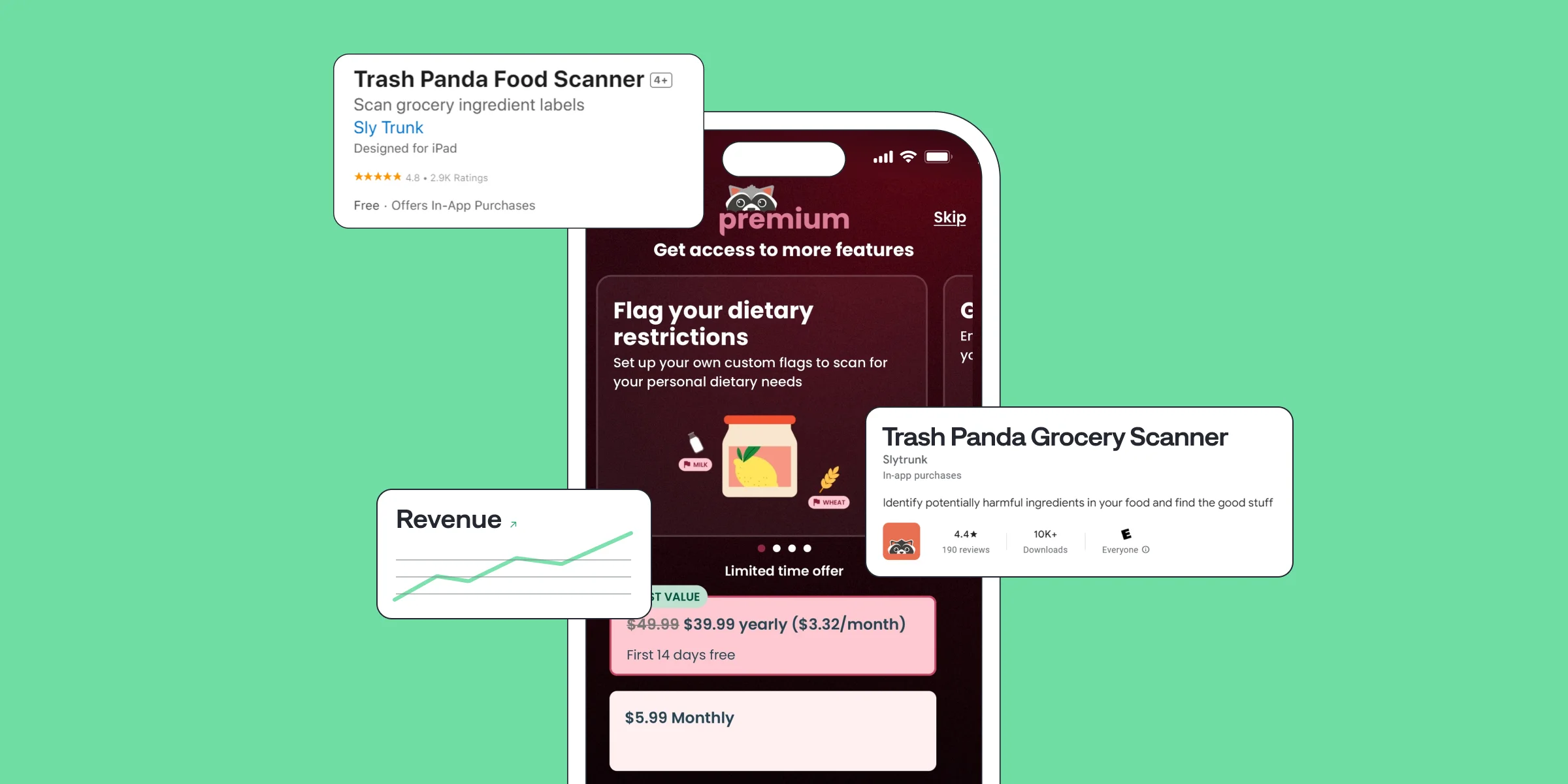
Trash Panda Maximizes App Revenue after Setting the Best Subscription Price with A/B Tests
Jul 8, 2024
Jul 8, 2024
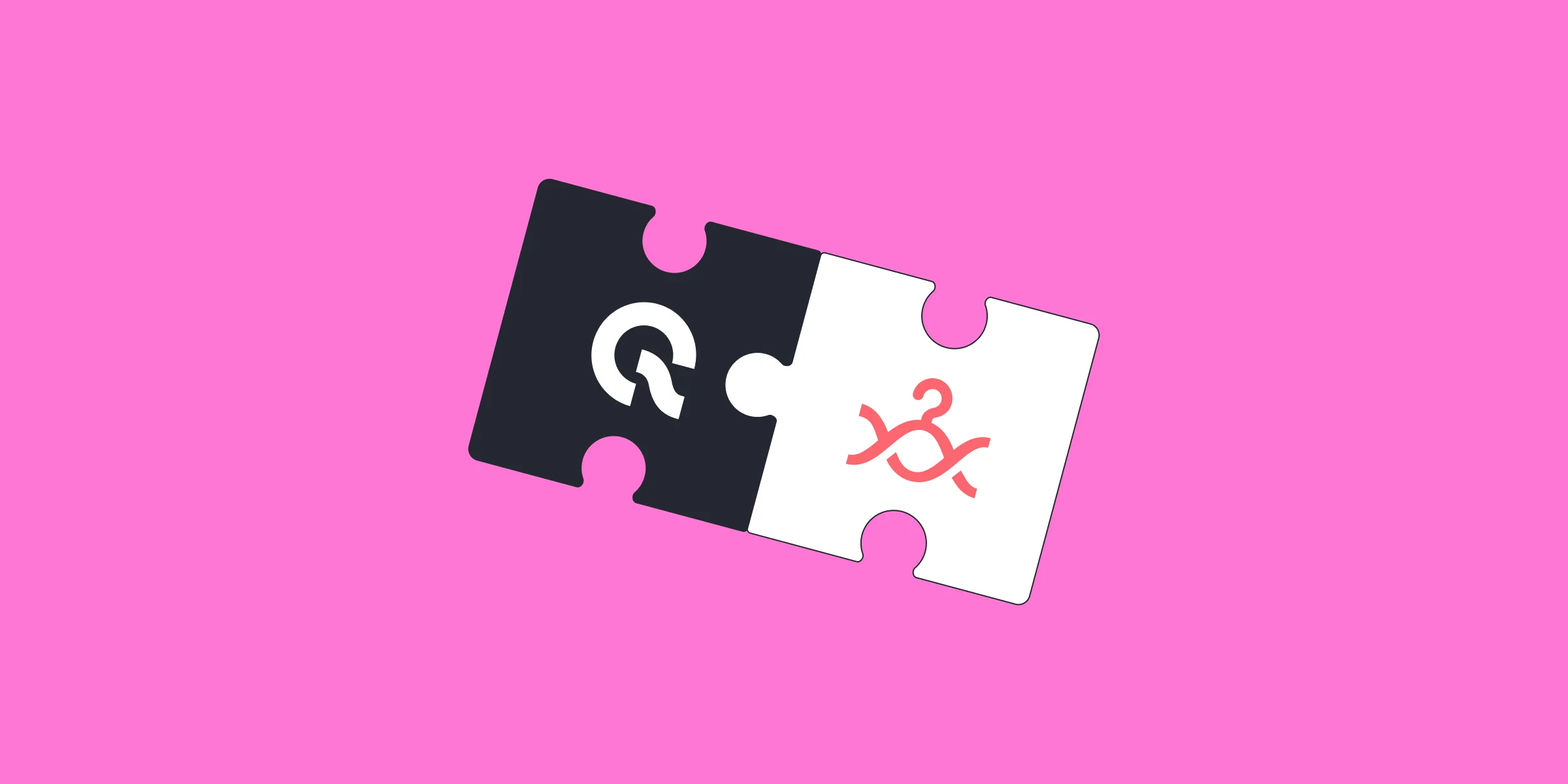
How StyleDNA Saved 20% Development Time and Unlocked New Features
Jun 19, 2024
Jun 19, 2024

WWDC24 Updates for App Developers | What's new in Storekit 2 and App Store Server API?
Jun 17, 2024
Jun 17, 2024

How A/B Testing with Qonversion Helped Iben Sandahl’s Parenting App Double Their Sales
Jun 13, 2024
Jun 13, 2024

Trash Panda Maximizes App Revenue after Setting the Best Subscription Price with A/B Tests
Jul 8, 2024
Jul 8, 2024

How StyleDNA Saved 20% Development Time and Unlocked New Features
Jun 19, 2024
Jun 19, 2024

WWDC24 Updates for App Developers | What's new in Storekit 2 and App Store Server API?
Jun 17, 2024
Jun 17, 2024


